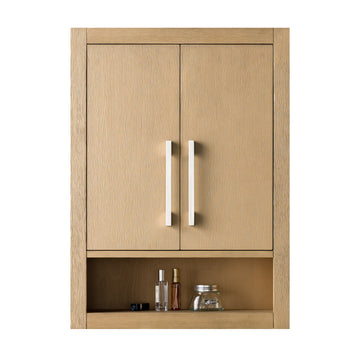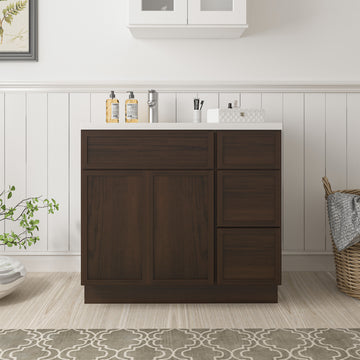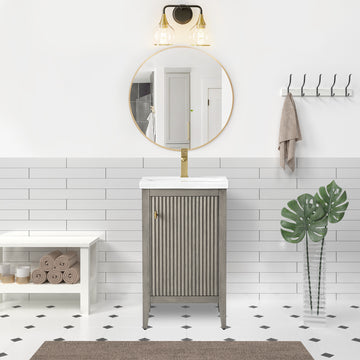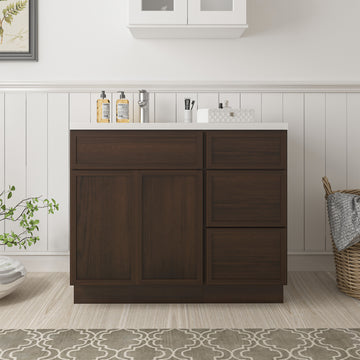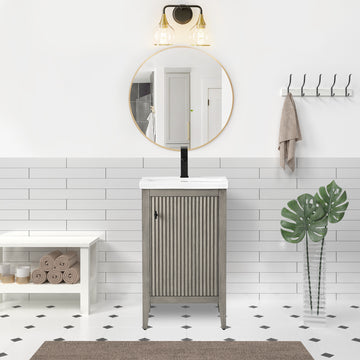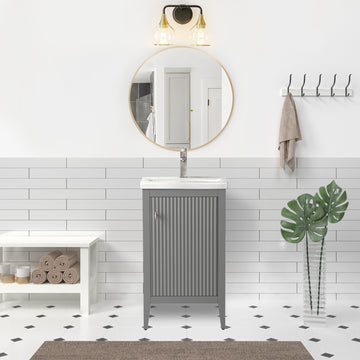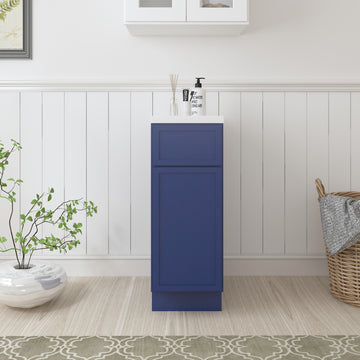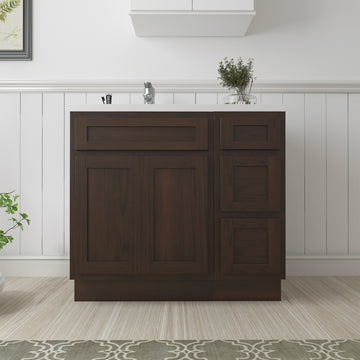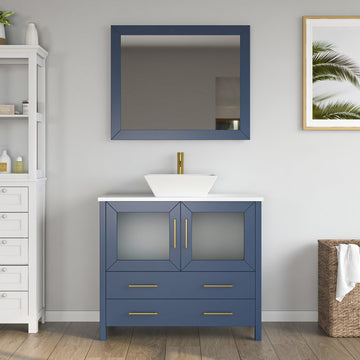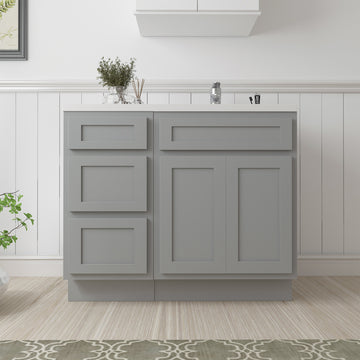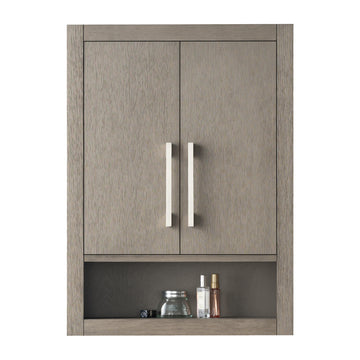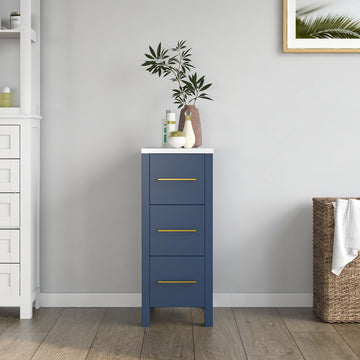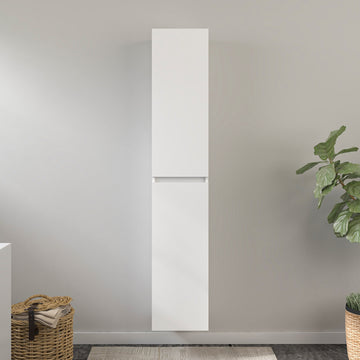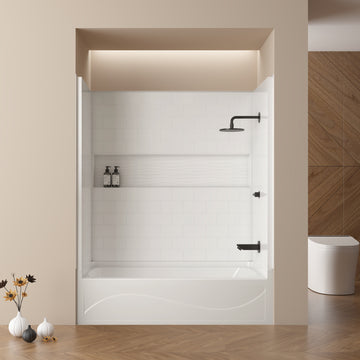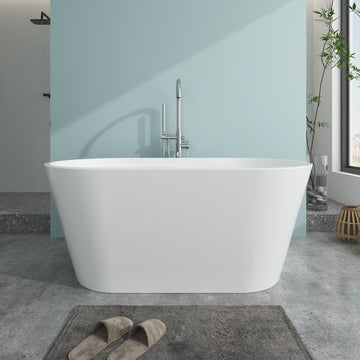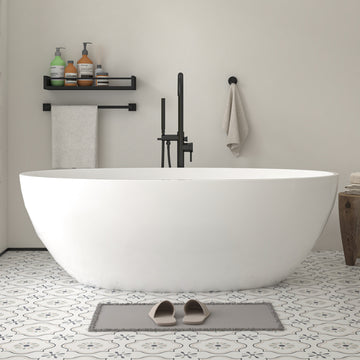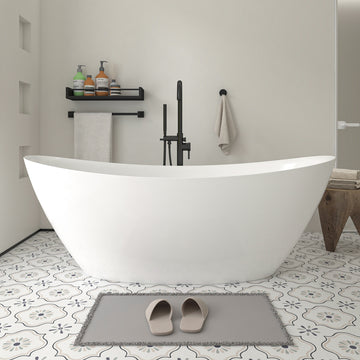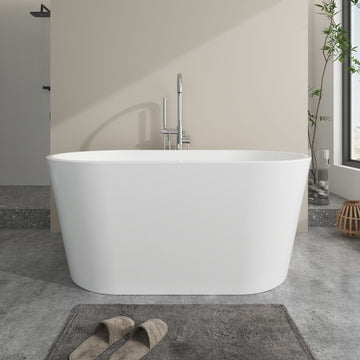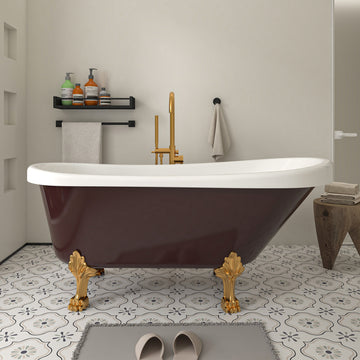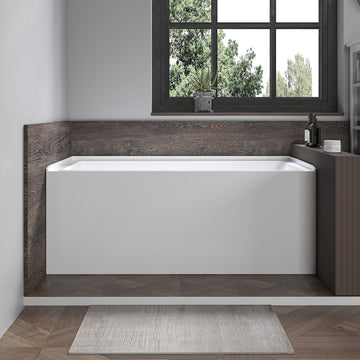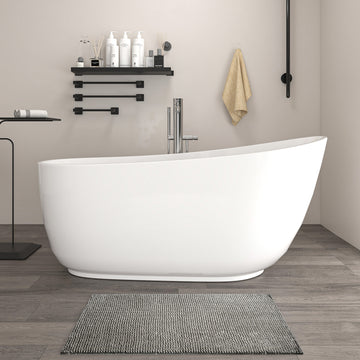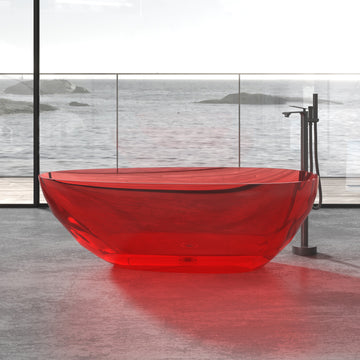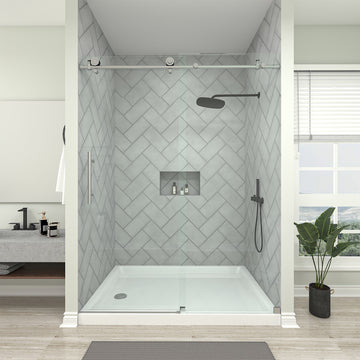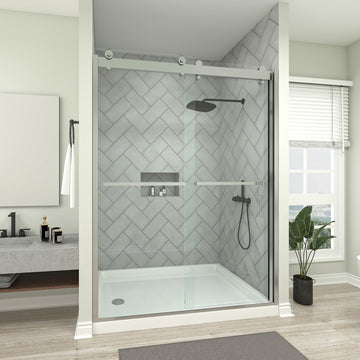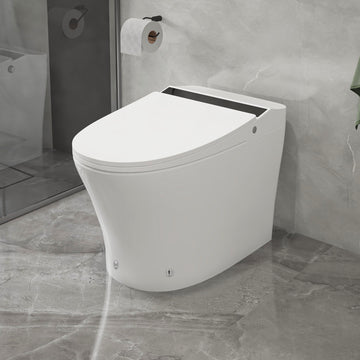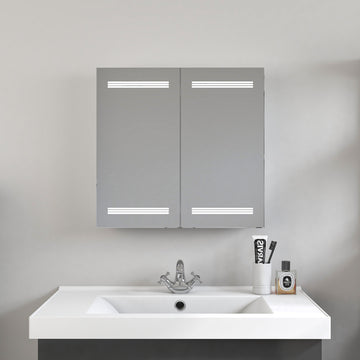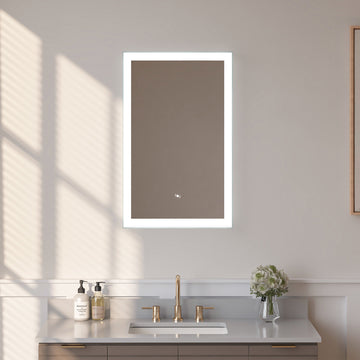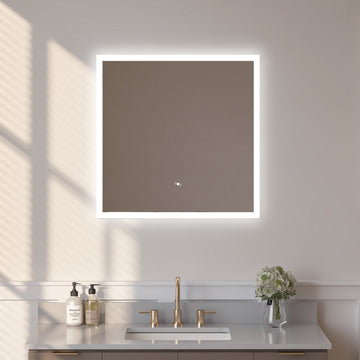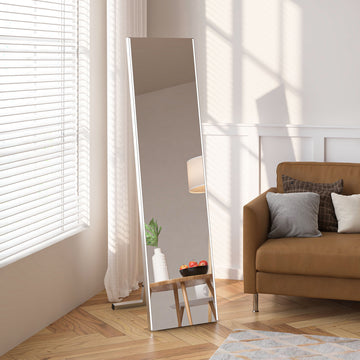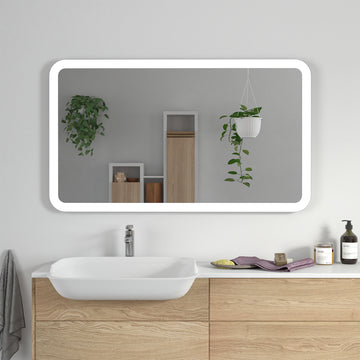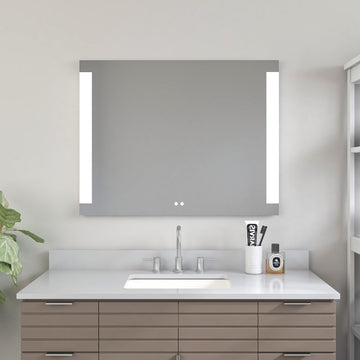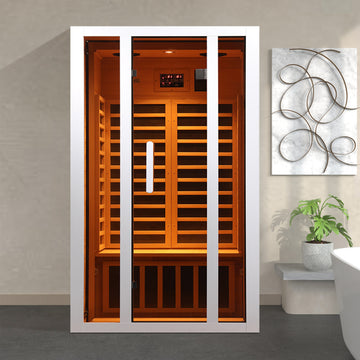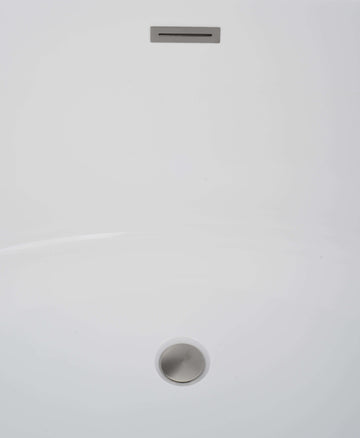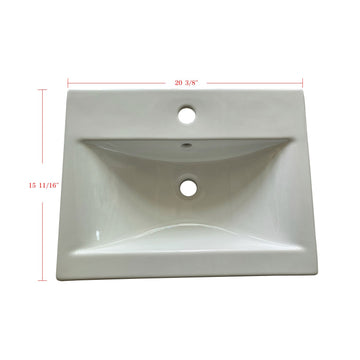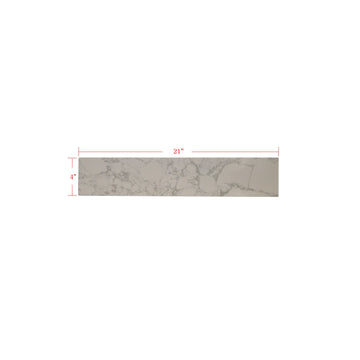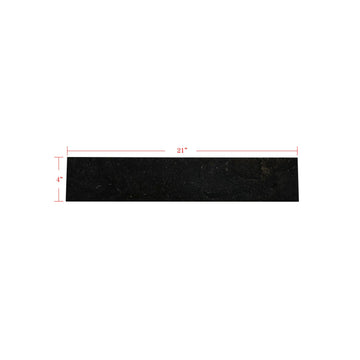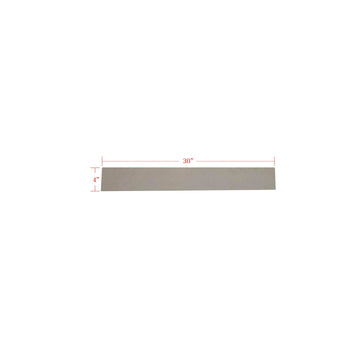Bathroom vanity lights are simple fixtures with a clear job: light your mirror area so you can see well. Most bathrooms have them. If you’re replacing one or choosing new, it helps to know the basics. This guide sticks to what matters and avoids the fluff.
We’ll cover the essentials: color temperature, brightness, and placement. You’ll see the main types of bathroom vanity lights and when each makes sense. We’ll also look at sizing for common mirrors and vanities, plus a few safety notes like damp ratings.
Whether you’re upgrading a single bar light or adding sconces, the goal is straightforward. Pick a light that fits the space, gives even light, and matches your setup. The details here will help you choose without guesswork.
Bathroom vanity lights color guide
Color temperature affects how a bathroom looks and how easy it is to see in the mirror. It’s measured in kelvin (K). Lower kelvin looks warmer and more amber. Higher kelvin looks cooler and more blue. Most bathroom vanity lights fall between 2700K and 5000K.
-
Warm (2700K–3000K): soft and cozy. Works well with warm metals and beige tile. At the same lumen level, warm light can feel a bit dimmer.
-
Neutral (3000K–3500K): balanced and natural. This range is common for bathroom vanity lights because it shows color accurately without feeling harsh.
-
Cool (4000K–5000K): crisp and bright. Useful in spaces with little daylight or where extra detail helps. It can read stark against warm finishes.
CRI (color rendering index) tells you how well a light shows true color. Look for CRI 90 or higher for tasks like shaving or makeup. CRI 95+ offers finer accuracy if that matters in your routine.
Keep color consistent. Mixing 2700K bulbs with 4000K bulbs creates uneven tone and can make shadows more noticeable. Use the same kelvin and similar CRI across fixtures near the mirror.
Think about dimming. Dimmable LED bathroom vanity lights at 3000K–3500K give flexibility for morning and evening. “Warm dim” LEDs shift to a warmer tone as they dim, which some prefer at night.
Daylight matters too. If your vanity gets bright natural light, cooler lamps can blend better. In a windowless bath, neutral or warm lamps can make the space feel steadier.
A simple baseline for most setups: 3000K to 3500K, CRI 90+, and dimmable. From there, adjust to match your finishes and the amount of daylight in the room.

Types of bathroom vanity lights
Bathroom vanity lights come in a few common forms. Each has trade‑offs for glare, shadow control, and style. Here’s a quick guide to the main types and when they make sense.
Wall sconces (pair at the sides)
-
What they are: Single fixtures mounted left and right of the mirror, often at eye level.
-
Why choose them: Even, shadow‑free light on the face. Good color accuracy when paired with diffused shades.
-
Watch outs: Need wall space on both sides of the mirror. Plan wiring for two points.
Bath bars (horizontal above the mirror)
-
What they are: A single bar or multi‑light fixture centered over the mirror.
-
Why choose them: Simple, common, and works with most junction box setups. Easy to size for single or double vanities.
-
Watch outs: Can cast shadows if mounted too high or with clear glass. Pick frosted shades or a diffuser for softer light.
Vertical LED bars (mounted flanking the mirror)
-
What they are: Slim, linear LED fixtures installed vertically on each side.
-
Why choose them: Very even distribution and modern look. Often high CRI with built‑in diffusers.
-
Watch outs: Requires side clearance. Check length so light spans most of the face area.
Multi‑light vanity fixtures (2–5 lights)
-
What they are: A row of individual heads on a bar, with shades facing up or down.
-
Why choose them: Flexible sizes and styles; easy to spread light across wider mirrors.
-
Watch outs: Down‑facing clear shades can create hot spots. Up‑facing shades rely on ceiling bounce and may feel softer but less task‑focused.
Lighted mirrors and medicine cabinets
-
What they are: Mirrors with integrated LEDs, edge‑lit or backlit, sometimes with side strips.
-
Why choose them: Clean look, even light, no separate fixtures to align. Many offer dimming and anti‑fog features.
-
Watch outs: Requires hardwiring or a concealed outlet. Check kelvin, CRI, and lumen output before you commit.
Pendants at the vanity
-
What they are: Hanging lights placed to the sides of the mirror or a pair over a double sink.
-
Why choose them: A design statement in taller rooms; can deliver side light similar to sconces.
-
Watch outs: Mind height, splash zones, and glare from exposed bulbs. Not ideal in low ceilings.
Recessed lights (as supplemental)
-
What they are: Ceiling cans or slim downlights near the vanity.
-
Why choose them: Useful for general light and to fill shadows when placed slightly in front of the mirror plane.
-
Watch outs: Overhead alone is not great for faces. Use with sconces or bars, not as the only task light.
Shade material and bulb style matter across types:
-
Frosted or opal glass reduces glare and evens out light.
-
Clear glass and exposed filament bulbs look crisp but can cause hotspots.
-
Integrated LED bathroom vanity lights simplify maintenance but make future color changes harder; fixtures with replaceable bulbs are more flexible.
For most setups, a pair of side sconces or vertical LED bars gives the most even face light. A centered bath bar is a simple, common choice when side space is limited.
Bathroom vanity lights size guide
Start with the mirror. For an above‑mirror bar, choose a fixture about 75%–100% of the mirror width. Mount it close to the mirror top (about 2–3 inches above) so light hits your face, not the ceiling. A depth of 4–6 inches is typical; go shallower in tight spaces to reduce glare.
For side lighting, place sconces or vertical LED bars 2–3 inches from the mirror edge. Center them near eye level for the main users (roughly 60–66 inches from the floor). Vertical bars 18–24 inches long cover most faces well. With wide mirrors or double vanities, treat each sink as its own zone and size each light to that width. Pendants work better in 9‑foot+ ceilings; keep the bottom of the shade about 30–36 inches above the counter.
Quick checks:
-
Match fixture width to the mirror, not the vanity cabinet.
-
Verify where the junction box is; it often dictates bar vs. sconces.
-
Test placement with painter’s tape before you buy.
Bathroom vanity light buying guide
Start with the basics: enough light, accurate color, the right rating for moisture, and a size that fits your mirror and wiring. From there, pick a style you like and a setup that avoids glare.

What to check before you buy
-
Lumens: target about 1,500–3,000 lumens for a single sink; 3,000–4,000 for a double. Layer with ceiling light if needed.
-
Color and CRI: 3000K–3500K, CRI 90+ for true color. Avoid mixing kelvin across fixtures.
-
Glare control: choose frosted/opal shades or diffusers. Clear glass can create hotspots.
-
Dimming: confirm LED dimmer compatibility (TRIAC/ELV). Warm‑dim is optional if you like softer nights.
-
Rating and safety: look for “damp rated” near the vanity; “wet rated” is for shower zones. UL/ETL listing is standard.
-
Build and finish: corrosion‑resistant finishes matter in humid rooms. Energy Star or JA8 (in CA) is a plus.
-
Maintenance: integrated LED is slim and efficient but not bulb‑swappable; replaceable‑bulb fixtures are more flexible.
-
Fit and mounting: check backplate size, junction box location, projection (depth), and whether the shades can face up or down.
How to buy the light based on your needs
-
Small, windowless bath: choose 3000K–3500K, high‑CRI, frosted diffusers. Aim to the higher end of the lumen range.
-
Makeup or color‑critical tasks: CRI 90–95+, side lighting (sconces or vertical bars) at eye level. Neutral 3000K–3500K.
-
Simple upgrade on a budget: keep the existing junction box and use a bath bar with frosted shades. Pick LED bulbs labeled 90+ CRI.
-
Low ceilings or narrow room: shallow fixtures (4 inches deep or less) reduce glare and bumps. Vertical bars stay close to the wall.
-
Coastal or high humidity: pick fixtures labeled for damp locations with sealed or well‑plated finishes. Avoid open‑bulb designs near splash.
-
Wide mirror or double vanity: treat each sink as a zone. Two matching fixtures often beat one oversized bar.
-
Smart control: if you want tunable white, pick a fixture that holds a steady CRI across the range, or stick to fixed 3000K and use a dimmer.
-
Long‑term value: look for 25,000–50,000‑hour LEDs, a clear driver warranty (3–5 years), and easy‑to‑clean shades.
Ending
Choosing bathroom vanity lights is mostly about fit and function. Start with the mirror size and the junction box you have. Then pick a type that suits the space: side sconces or vertical bars for even face light, or a simple bar above if side room is tight. Keep color consistent at 3000K–3500K with CRI 90+, and aim for enough lumens to see clearly without glare.
Check that the fixture is damp rated, sized in proportion to the mirror, and uses diffusers to soften hotspots. If you can, dim the light. It makes mornings and late nights easier on the eyes. Before you buy, tape the outline on the wall to confirm height and spacing.
A quick path to a good result:
-
Match the fixture to the mirror width and placement
-
Choose neutral color temp with high CRI
-
Confirm output, rating, and dimmer compatibility
Do these steps and most bathroom vanity lights will work as expected—no drama, just clear, even light where you need it.
FAQs
I only have an above‑mirror junction box. How do I get even face light without adding side sconces?
Use a wide, diffused bath bar mounted close to the mirror top (2–3 inches above) so the light washes forward, not up.
Pick frosted/opal shades or a continuous diffuser and avoid clear glass. If you can’t open the wall, consider a lighted mirror (integrated LEDs) or add two shallow ceiling downlights placed 12–18 inches in front of the mirror line to fill under‑eye shadows.
The fixture lists watts but not lumens. How can I tell if it’s bright enough?
Estimate using typical LED efficacy (about 70–100 lumens per watt). For example, a 6W LED head is roughly 420–600 lumens; three heads would be about 1,200–1,800 lumens. For a single sink, aim around 1,500–3,000 lumens total.
If the fixture uses replaceable bulbs, check the bulb box for lumens. With integrated LEDs, look for a spec sheet or ask the seller for the output and CRI before you buy.
Can I mount a vanity light on a mirror or over tile?
Yes, but plan for the substrate. For mirror‑mounted fixtures, a glass shop must drill the mirror and you’ll need a solid backer (plywood) behind it to carry the load. Choose a fixture with a wide backplate and sealed wiring grommets.
For tile, use the correct anchors and a diamond bit, avoid cracking edges, and verify the junction box is flush. In both cases, confirm the fixture is damp rated and follow the manufacturer’s mounting instructions.

